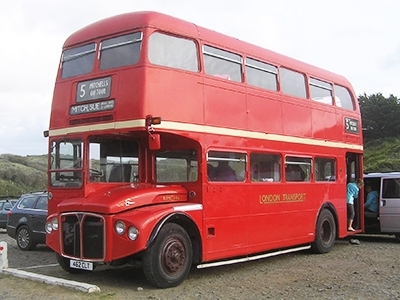Routemaster
 Introduced by London Transport in 1956, the Routemaster saw continuous service in London until 2005. Despite the retirement of the Routemaster it has retained its iconic status and currently remains on two heritage routes in central London. This has made it one of London’s most famous symbols, with much tourist paraphernalia continuing to bear Routemaster imagery.
Introduced by London Transport in 1956, the Routemaster saw continuous service in London until 2005. Despite the retirement of the Routemaster it has retained its iconic status and currently remains on two heritage routes in central London. This has made it one of London’s most famous symbols, with much tourist paraphernalia continuing to bear Routemaster imagery.The Routemaster was primarily intended for London use, being designed by London Transport and constructed at the AEC Works in Southall, Middlesex. In all 2,876 Routemasters were built.
It was an innovative design and used lightweight aluminium and techniques developed in aircraft production during World War II. As well as a novel weight-saving integral design, the Routemaster also introduced (for the first time on a bus) independent front suspension, power steering, a fully automatic gearbox and power-hydraulic braking. The majority of production examples were 27 feet 6 inches (8.4 metres) long to meet the then maximum length regulations. The regulations were later relaxed and 30 feet (9.1 metres) “long” types were produced. The Routemaster outlasted several of its replacement types in London, the unique features of the standard Routemaster were both praised and criticised. The open platform, while exposed to the elements, allowed boarding and alighting away from stops; the presence of a conductor allowed minimal boarding time and optimal security.
There were several variants of the Routemaster produced, the classes were designated as follows:
- RM – standard bus (27.5 feet (8.4 m))
- RML – (lengthened) bus (30 feet (9.1 m))
- RMC – coach (27.5 feet (8.4 m))
- RCL – (lengthened) coach (30 feet (9.1 m))
- RMF – front entrance bus (essentially a demonstrator to encourage sales outside London)
- RMA – front entrance bus (designated by LT when purchased from British Airways)
